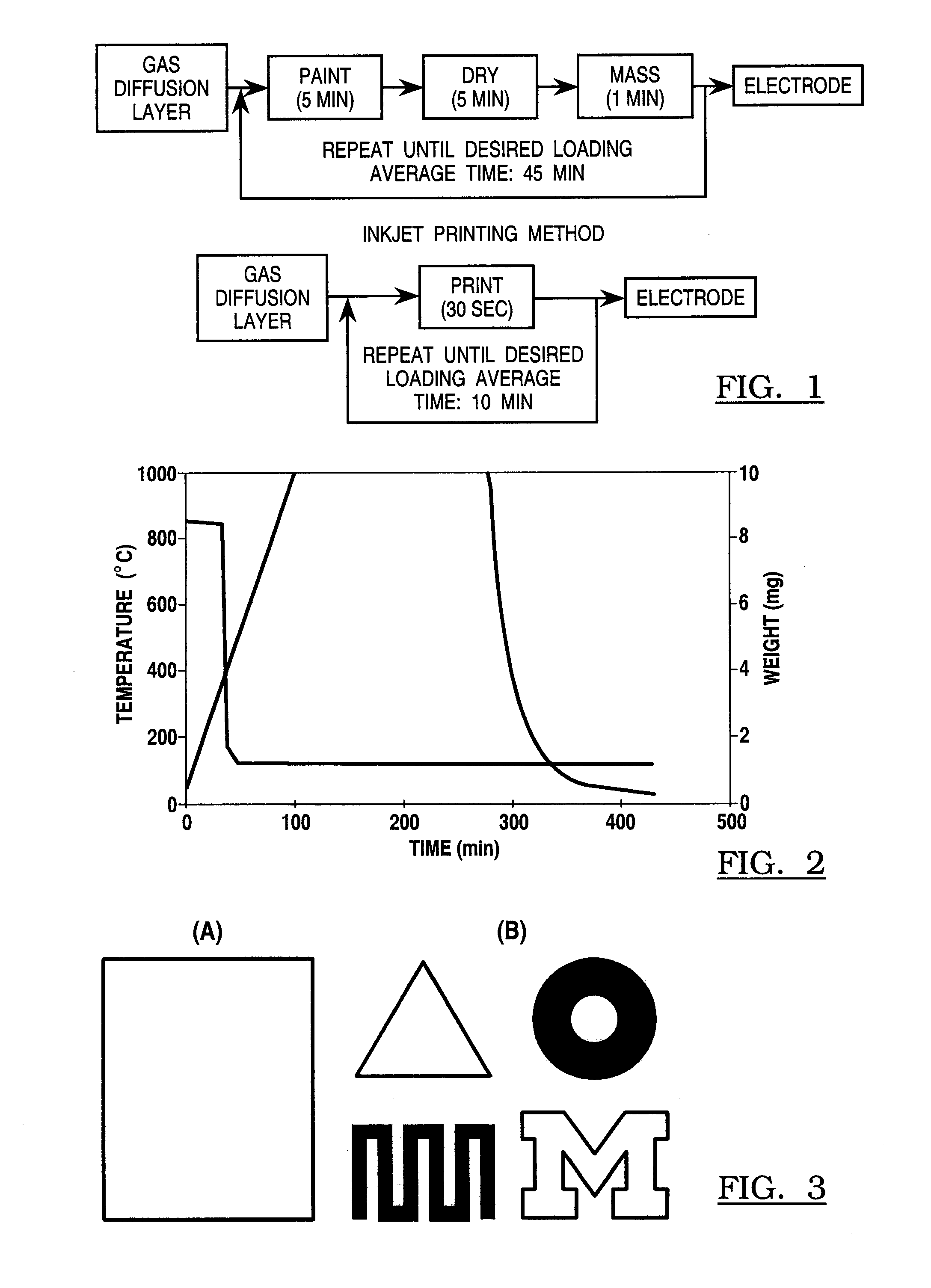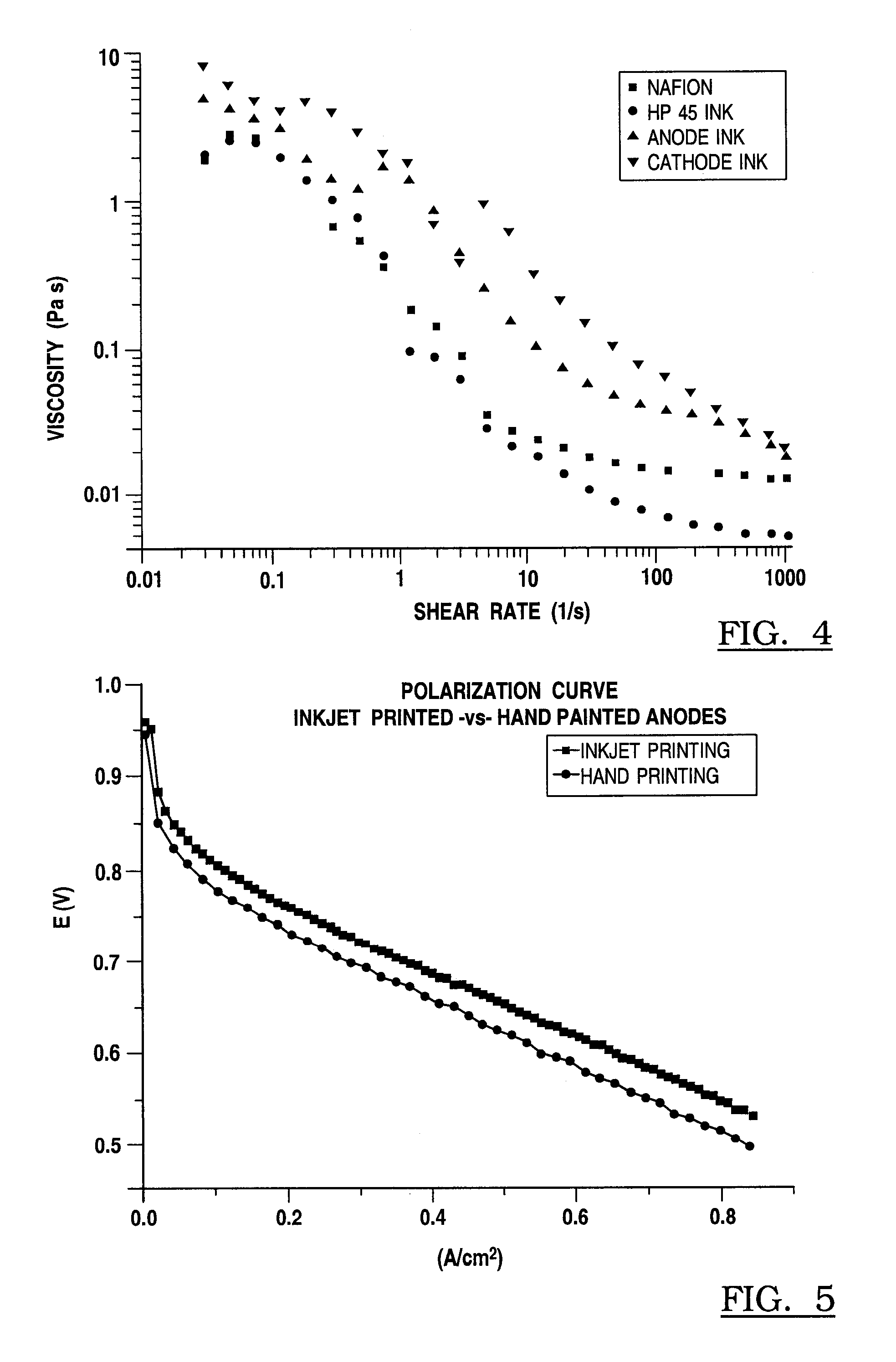Inkjet printing of materials for use in fuel cells
- Summary
- Abstract
- Description
- Claims
- Application Information
AI Technical Summary
Benefits of technology
Problems solved by technology
Method used
Image
Examples
Embodiment Construction
)
[0029]Conventional inkjet printing technology can reproducibly dispense small droplets of fluid onto a desired location upon a substrate. The present invention discloses a material flowing through a nozzle in an inkjet cartridge, the material including three main components: (1) a catalyst (for example, carbon powder); (2) a metal (such as platinum powder); and (3) a polyelectrolyte in solution form (e.g. Nafion® 117). These components are carried in a liquid solvent which ultimately disperses after the effluent is deposited on a substrate. As used herein, the term “catalyst ink material” is used to demote the effluent from the inkjet printer.
[0030]The present invention comprehends such substrates as gas diffusion layers, (e.g. carbon cloth or carbon paper), and a solid polyelectrolyte, such as but not limited to Nafion® 117.
[0031]What results is a deposit of a catalyst material that is delivered with picoliter precision that can be used, for example, to create membrane electrode a...
PUM
 Login to View More
Login to View More Abstract
Description
Claims
Application Information
 Login to View More
Login to View More - R&D
- Intellectual Property
- Life Sciences
- Materials
- Tech Scout
- Unparalleled Data Quality
- Higher Quality Content
- 60% Fewer Hallucinations
Browse by: Latest US Patents, China's latest patents, Technical Efficacy Thesaurus, Application Domain, Technology Topic, Popular Technical Reports.
© 2025 PatSnap. All rights reserved.Legal|Privacy policy|Modern Slavery Act Transparency Statement|Sitemap|About US| Contact US: help@patsnap.com



